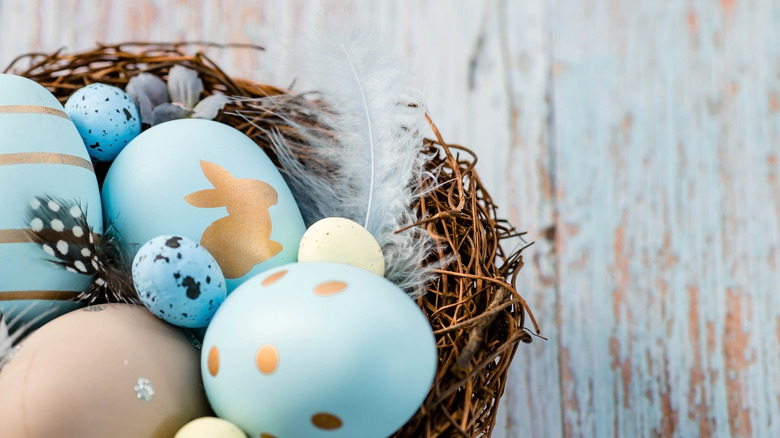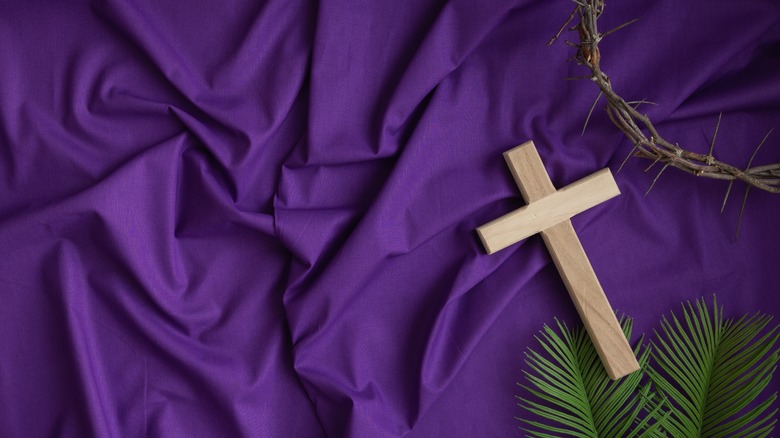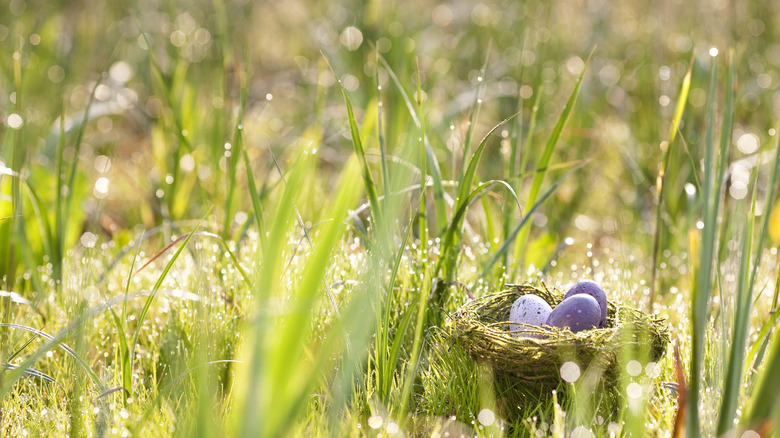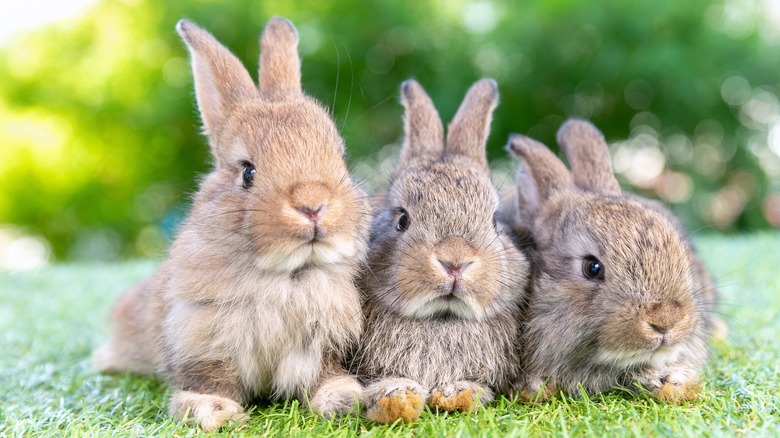Medieval Easter Featured Traditions That May Look Familiar
Ah yes, Easter; the Christian holiday celebrating Jesus rising from the dead; the Sunday after Palm Sunday and the third day after Good Friday, which comes after Maundy Thursday; the cornerstone of Christianity that unities all of its disparate threads under the single promise of a peaceful, blissful life after death. Also, that holiday about pastel eggs toted around in baskets and hid from children, and also ... a rabbit or something that maybe brings you the eggs? What in the world is going on with this holiday?
For anyone who's stopped and thought about Easter and Easter traditions, such whackadoodle contradictions likely haven't gone unnoticed. While your first instinct might be to think that the egg stuff is totally random, doesn't make any sense at all, and has nothing to do with Jesus, the origins of traditions do tend to get forgotten over time. Take eggs: The Aethelmearc Gazette says that eggs in medieval times got doled out on Easter because Easter comes after Lent and was supposed to be a time of celebration. Meaning, it was time to eat whatever you can get your hands on, including the eggs that you were forbidden to eat for 40 days. Nifty, huh? As for the painting of eggs, that apparently dates back to when eggs were painted red like Jesus' blood. This, and many other Easter traditions, have colorful roots that go back hundreds upon hundreds of years.
Eggs for Lent in red, green, and gold
One of the first big instances of Easter egg decorating we know of from history came in 1290 C.E., as Medievalist Errant describes, when King Edward I lacquered 450 eggs in gold leaf. That's a bit extravagant, and there's no telling what the common peasant used to paint their own eggs if they did at all. Fourteen years before that in 1276 C.E. Eleanor and Simon de Montfort bought an unbelievable 3,700 eggs for their Easter celebration, though there's no mention of any painting.
Gode Cookery points out that medieval chefs had a penchant for arranging food in artistic ways like a boiled peacock "redressed in its own feathers & is made to breathe fire," so maybe the whole egg painting thing wasn't that odd. These eggy examples happened over 1,250 years after Jesus died, so how the whole egg painting thing evolved during the time between is anyone's guess, but egg decorating is not specific to Europe or the Medieval era. In 2010 archeologists found remnants of adorned ostrich eggs in South Africa that were 65,000 to 55,000 old, per the Library of Congress Blog.
Still, it was the Orthodox Christian church — descended from the Byzantine Empire, the remains of the eastern half of the old Roman Empire — who painted their eggs red after the blood of Jesus. Meanwhile, Germanic tribes further west painted their eggs green and apparently even hung them in trees. While boiling eggs was a common way to preserve them, if paint or dye wasn't available folks could just boil eggs with onions to give the shells a bright sheen.
Hocktide and Martin Luther
As for the Easter egg hunt, English Heritage points to Martin Luther — the original 16th-century Protestant — for hatching the plot. As the story goes, he took some painted Easter eggs and hid them as part of a Biblically educational game for his church. The eggs were supposed to represent Jesus hidden from sight when various women — different Biblical Gospels have different accounts — went to Jesus' tomb and found it empty.
Other Easter traditions have fallen by the wayside, as The Aethelmearc Gazette describes. For instance, folks used to get new clothes on Easter in a kind of hand-me-down fashion. The wealthy gave their old clothes to servants, who gave their old clothes to family members, and so on. It's unknown whether or not this was done out of Christian kindness in the spirit of Easter, or just an attempt to get rid of unwanted goods in an era before Goodwill donations.
And then we've got Hock Monday and Hock Tuesday in England, per Seb Reilly. As a type of flirtatious play and "with great merriment" women would tie up men in the streets on Monday, and men tie up women on Tuesday. Yes, really. Each would demand payment for release in the form of money and kisses, and the money was donated to the church. Some regions put a rope across a road like a toll booth rather than tie people up. So yeah, let's be glad we kept the egg tradition instead.
Symbol of fertility ... and also somehow chastity
Finally we come to the strangest Easter tradition of them all: the inclusion of rabbits. They don't lay eggs, so there's no connection there. Jesus didn't ride a fluffy bunny into Jerusalem on Palm Sunday, so there goes that theory. Some have speculated that Easter connects to spring and rebirth, and the hare-y ability to procreate in vast quantities. You've heard the phrase "breed like rabbits," right? So is that the whole story? Kinda-sorta, but it's also a bit more complicated.
The significance of rabbits to human ritual far, far predates the life of Jesus and Easter traditions, medieval or otherwise. As Smithsonian Magazine says, rabbits popped up in classical Greece as symbols of fertility related to Venus, the goddess of sexual desire. By 51 B.C.E., Julius Caesar had even banned the eating of rabbits because of their religious importance. In fact, rabbits received ritual burials not only then, but as far back as 4,000 B.C.E., as archaeological research published on Science Direct indicates.
Rabbits went on to carry their pre-Christian significance into the Christian age. They appear all over the place in medieval and Renaissance artwork. White rabbits, for instance, were often paired in paintings with the Virgin Mary to symbolize her chastity. This is how the "Easter hare," as a combined heathen-Christian image, evolved side-by-side with other Easter traditions like egg painting and egg hunting. By the 16th century, Easter bunnies were here to stay.



